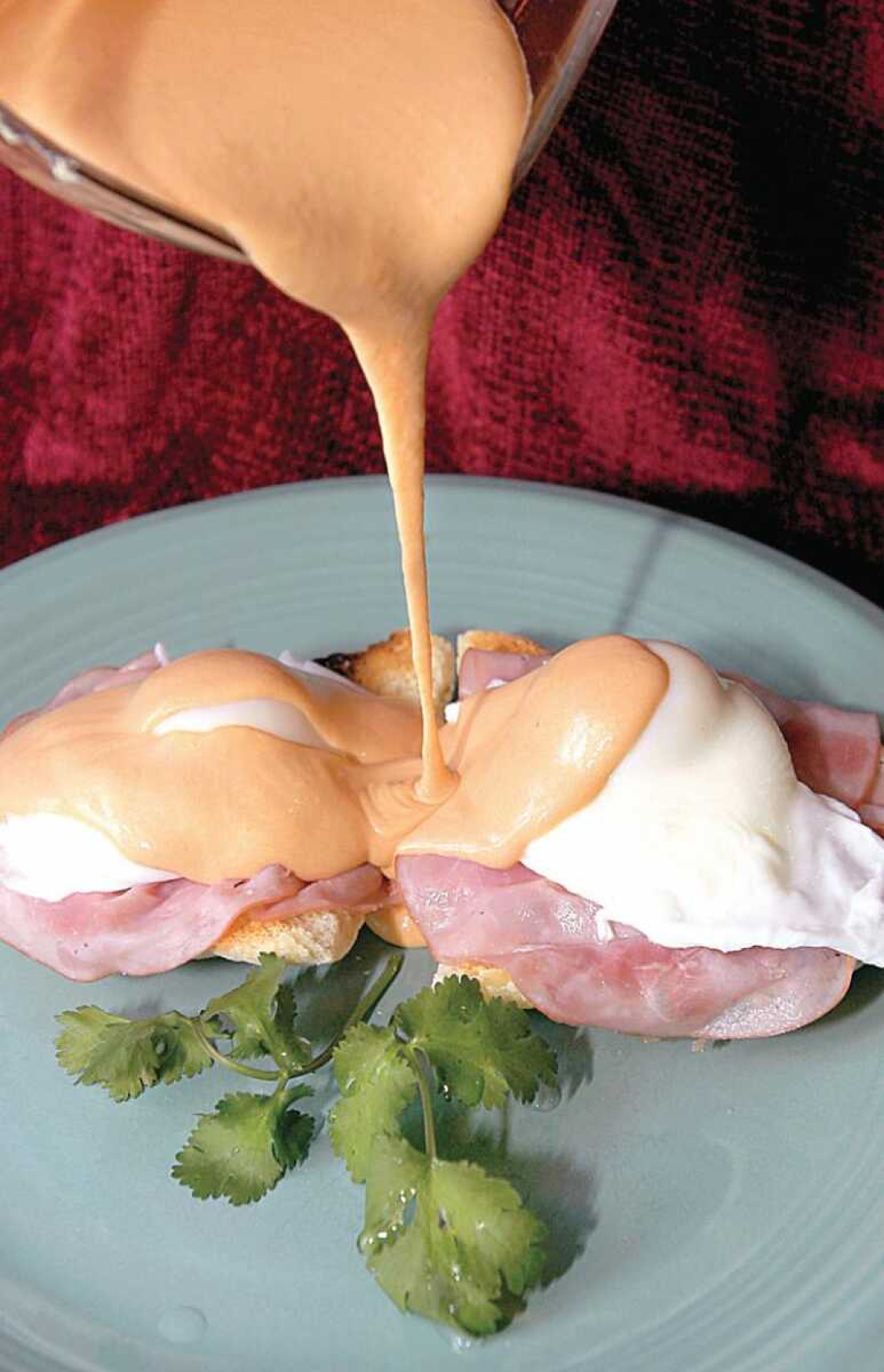The Catholic leaders have a diverse, rich history with food
Habemus papam! Thanks to the modern media, probably never before in human history have so many people hung on those words. Consequently, as the world sat vigil for the passing of one pope and watched as a successor was chosen, almost every conceivable aspect of the papacy has been analyzed and discussed.
All but one, that is. For some reason there has been scant attention paid to La Cucina del Papa, the pope's kitchen.
That's a shame, it seems to me. After all, the Apostolic See has exerted its impact on our culinary customs, and not just through its calendar of fast days. The tradition of the Christmas Eve feast, for example, owes its existence to the 15th century pope, Alexander VI, who had a penchant for desserts. Furthermore, legend has it that the French owe a debt to Pope Gelasius I of the fifth century for one of their national dishes, the crepe. And Chateauneuf-du-Pape, according to some the noblest of all wines, clearly is connected to papal gourmandizing.
Granted, not every pope has been a gourmet. St. Sylvester I, the first pope to be acknowledged by the state, was a hermit given to fasting. Pope Innocent III, who first gave ecclesiastical sanction to the doctrine of transubstantiation, preached austere living and insisted that only a single dish be served at his table. Pope Sixtus IV, the architect of the Inquisition, was a confirmed dieter.
But many pontiffs vowed that enjoyment at the table was not incompatible with papal duties. After all, by tradition the first thing a pope does after giving his first public blessing is to return to the conclave to share a meal with the cardinals. (According to Vatican correspondent John L. Allen Jr., the late John Paul II uncorked the champagne himself at his first papal meal and went around the room filling everyone's glasses while singing Polish folk songs.)
In their exhaustive study of the secrets of the papal table, culinary historians Mariangela Rinaldi and Mariangela Vicini chronicle the eating habits of some two dozen popes. Perhaps the most notorious from a gastronomic perspective was Pope Martin IV, who lived in the 13th century. Nicknamed the "gluttonous" pope, he merits a mention in Dante's "Divine Comedy" -- consigned to purgatory with other gourmands. With no small measure of understatement, Rinaldi and Vicini remark that he is "better remembered for his appetite than for his pastoral commitment."
His favorite dish was eels, a great delicacy in the Middle Ages. He had them shipped in from Lake Bolsena, whereupon they were marinated in Vernaccia wine before being roasted. Reportedly once after devouring plate after plate of the eels to the point of discomfort, he exclaimed, "Good God, how much we must suffer for the Church of God!" Alas, his fondness for these flavorsome fish was his undoing. He died of "corpulence and indigestion" in Perugia in 1285 and, in accordance with tradition, his body was washed in heated Vernaccia.
Though not as infamous as Martin, there were plenty of other epicurean popes over the years. Clement VI had 50,000 pies baked for his coronation. Leo X, who underestimated the plump Martin Luther, threw banquets consisting of 25 courses. Julius III appointed the great Italian cook, Bartolomeo Scappi, as his personal chef. (When Scappi catered the conclave in 1549, the food was so good the Cardinals took two months to finish their task.) Benedict XIV built Rome's first café -- in the Vatican Gardens in the 18th century. Boniface IX (Pietro Tomacelli) loved tomaselle (liver dumplings) so much that they are said to be named after him. John XXIII, a.k.a. the "Kitchen Pope," had to have his vestments regularly altered to accommodate his ever expanding waistline.
Truly, as Bee Wilson, writing in the New Statesman, notes, "The papal stomach has feasted as well as fasted." And many ate dinner as though it were their last supper.
Eggs Pope Benedict
This recipe, adapted from famed Seattle chef Don Curtiss, seems an appropriate culinary tribute to the new pope. Relying on Italian ingredients like ciabatta, prosciutto, and tomatoes makes the dish all the more heavenly.
Ingredients:
1 cup hollandaise sauce
4 teaspoons tomato puree
1 teaspoon tomato paste
4 eggs
4 slices ciabatta
8 slices prosciutto
Directions:
Combine tomato puree and tomato paste with hollandaise. Toast ciabatta. Lightly grill prosciutto. Poach eggs. Place two slices prosciutto atop each ciabatta slice and top with egg. Ladle with sauce. Makes 4 servings.
Listen to A Harte Appetite at 8:49 a.m. Friday on KRCU, 90.9 FM. Write A Harte Appetite, c/o the Southeast Missourian, P.O. Box 699, Cape Girardeau, Mo., 63702-0699 or e-mail tharte@semissourian.com.
Connect with the Southeast Missourian Newsroom:
For corrections to this story or other insights for the editor, click here. To submit a letter to the editor, click here. To learn about the Southeast Missourian’s AI Policy, click here.









